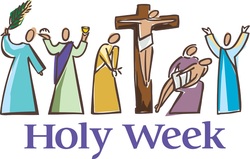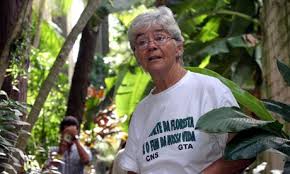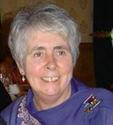
John Paul was well known because of his travels, even coming to have lunch in my house in Scotland. It's not quite what it seems as it was a convent in the grounds of a college where he gave a speech on education. But he did lunch there and it caused a lot of excitement especially for those of us brought up in the days when Popes never left the Vatican. It seemed almost unbelievable to meet a Pope in one's own home! John Paul was a larger than life figure who appealed to large audiences. He could speak to large gatherings and each one felt personally addressed. My experience of meeting him face to face was a bit different as he tended to look beyond the person he was being introduced to. I felt at the time it might be a way of keeping a kind of detachment in the face of public adulation but I think it was simply his personality. I remember the great excitement when he was elected. Again he broke stereotypes as this was the first non-Italian Pope in a long time. It seemed to usher in a new era. For many people these expectations were dashed as he seemed to move the Church in a more conservative direction and for some time it looked as though the new life that came with the Second Vatican Council was in danger of being extinguished. He was, however, a great advocate of peace and was recognised as making a significant contribution to the ending of the Cold War.
He was also a great advocate of interreligious dialogue. He had been brought up in a house owned by a Jewish family, was the only gentile to play in the Jewish football team at school and felt keenly the sufferings of the Jewish people, knowing well what the Holocaust had meant to them. I'm sure this would have been a factor when at the millennium he apologised for the wrongs Christians had committed in the past, including wrongs against the Jews, other faiths and cultures. This didn't sit too easily with the then Cardinal Ratzinger as the document Memory and Reconciliation shows. , Nor did his call to the religious leaders of the world to come to Assisi to pray for peace, something Cardinal Ratzinger boycotted. The debate that accompanied these meetings, three in all, led the Catholic Church to declare its stance on praying with people of other faiths as coming together to pray but not praying together. This is a topic for another blog but enough to say that Pope Francis cut through this by silently blessing a delegation from the press shorty after his election. No matter what his theology John Paul visited synagogues and mosques, kissed the Qur'an, left a prayer for forgiveness at the Western Wall in Jerusalem and hailed the Jewish people and his elder brothers and sisters. He was a true ambassador for dialogue, saying "either we learn to walk together in peace and harmony or we die together"
John XXIII was a different kind of person and a different kind of Pope. He was elected after Pius XII who had been Pope all during my childhood and teenage years. At 76 he was seen as an interim Pope but he shook the Church in a way no-one could have envisaged. Unexpectedly he called the Second Vatican Council saying he wanted to open the windows of the Church and let the Spirit blow through it. He wanted the Church to look out on the world and the world to look in on the Church. The Second Vatican Council changed so much - liturgy no longer in latin but in the the language of the country in which it was being celebrated, a new sense of calling for all Catholics whose participation in the priesthood of Christ was recognised, an awareness that the Church was part of humanity with the same hopes and fears. In all 16 documents were published. One of the most important for me was the one on the Church's Relationship to Non-Christian Religions, described by Michael Fitzgerald as a gift of the Spirit because it was so unexpected. John XXIII's great concern was Christian Unity and he only extended this to include a statement on the Jews after a visit from Rabbi Jules Isaac who pointed out to the Pope the anti-semitic elements in scripture and Church teaching and how this had contributed to the history of Catholic anti-semitism which had culminated in the holocaust. The Pope needed no convincing. As Nuncio to Turkey he had issued baptismal certificates to Jews to help them escape the Nazis, for which he is now recognised as one of the Righteous Gentiles in Israel. What started off as a statement about the Church's relationship with the Jewish community developed into a document in its own right and included the other major world faiths but more of this in another blog.
So we have two great Churchmen being publicly recognised for their virtue and given the title saint. But all this has to be seen within the context of the Church's teaching about the communion of saints. In a sense all those who faithfully tried to live out the gospel message of peace and reconciliation and have died before us are regarded as saints and there are living saints too. in the news today are two such people who both happen to be Jesuits. Father Frans van der Lugt who served in Homs in Syria for over 50 years refused to leave the city when it was under seige. He was the last European in the city and continued to serve the people as he had done for most of his life. His home was a space of quiet and peace but this was disturbed when he was shot at point blank range on 7th April by a masked gunman. The other Jesuit is Paolo dall Oglio, an Italian priest who has also spent his life in Syria and has not been seen or heard of since he was kidnapped by Islamist rebels in Raqqa in July 2013. He developed a wonderful monastic centre called Deir Mar Musa which was a place of dialogue for Christians and Muslims. Surely these two men are saints, heroes of faith whom we can be proud of and who are an inspiration to us. There are, however, many more men and women like them, quietly going about lives of love and service in small and inconspicuous ways and members of the communion of saints even if not publicly recognised as such.






 RSS Feed
RSS Feed
